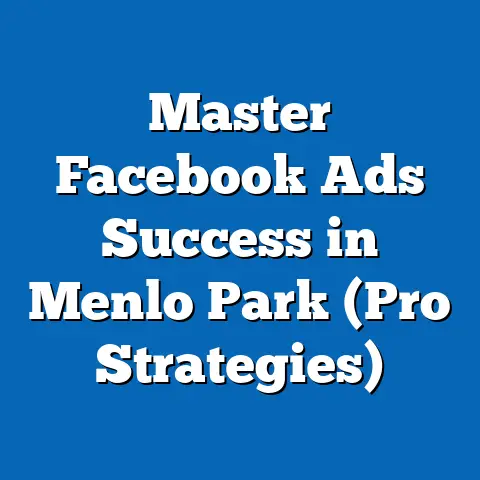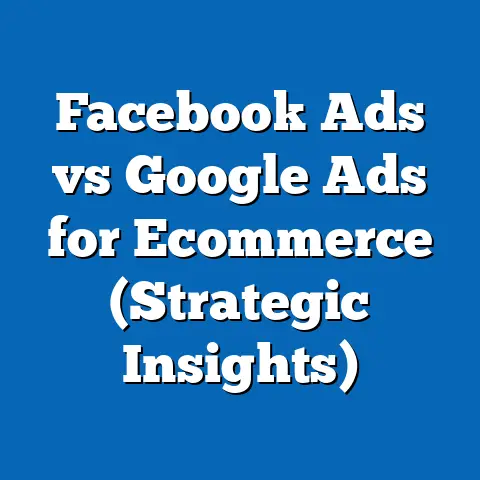Fix Facebook Ad Hiding Issues (Proven Strategies Unveiled)
Have you ever launched a Facebook ad campaign, watched the initial excitement build as clicks and impressions started rolling in, only to feel a pit forming in your stomach as those numbers inexplicably plummeted? It’s a feeling I know all too well. It’s like shouting into a void, wondering if your message is even being heard. You meticulously crafted your ad, targeted the perfect audience, and even allocated a decent budget. Yet, there it is – the sinking realization that your ads are being hidden, effectively silencing your carefully planned marketing efforts.
I remember one campaign in particular. I was launching a new product for a client, a cutting-edge piece of software. The initial response was fantastic. The engagement was high, and leads were pouring in. Then, seemingly overnight, everything dried up. It was as if someone had flipped a switch. I spent hours pouring over the Ads Manager, initially blaming my targeting, my creative, even the product itself! But something felt off. My ads were being hidden, not just underperforming.
Have you ever felt like your hard work and creativity were just cast into the void? The frustration is real. The feeling of powerlessness can be overwhelming. You start questioning everything – your strategy, your creative, your understanding of the platform itself. But don’t despair! The good news is that understanding and addressing Facebook ad hiding issues is crucial for successful advertising campaigns. It’s a challenge that many marketers face, and with the right knowledge and strategies, it’s one you can overcome. In this article, I’ll unveil proven techniques to diagnose and fix those frustrating ad hiding issues, ensuring your message reaches the audience it deserves. Let’s dive in and get your ads back on track!
Understanding Facebook Ad Hiding Issues
Let’s get crystal clear on what we’re talking about. Facebook ad hiding issues refer to scenarios where your meticulously crafted ads are not being shown to your intended audience, or are being shown far less frequently than they should be. This isn’t simply a case of low engagement or poor performance; it’s a situation where Facebook’s algorithm, or even users themselves, are actively limiting the visibility of your ads.
There are several reasons why your ads might be hidden. Let’s break down some of the most common culprits:
- Policy Violations: This is probably the most frequent offender. Facebook has strict advertising policies, and even unintentional violations can lead to your ads being disapproved or hidden. This could include misleading claims, targeting sensitive categories, or using inappropriate imagery.
- Audience Targeting Mishaps: Are you targeting too broad an audience? Or perhaps your audience is too niche and saturated with similar ads? Inefficient targeting can lead to low engagement, which signals to Facebook that your ads aren’t relevant, resulting in reduced visibility.
- Low Engagement Rates: This is a vicious cycle. If your ads aren’t engaging, people are less likely to click, comment, or share. This lack of interaction tells Facebook that your ads aren’t valuable, leading to lower delivery rates and, eventually, being hidden.
- Negative Feedback: Users can actively hide your ads or report them as offensive or irrelevant. Too much negative feedback is a major red flag for Facebook, and it will quickly penalize your ads.
- Ad Fatigue: Even the best ads can wear out their welcome. If your audience sees the same ad too many times, they’ll start ignoring it, or worse, actively hide it.
The prevalence of these issues is significant. According to recent industry reports, a substantial percentage of Facebook advertisers experience ad delivery problems at some point. I’ve personally seen campaigns grind to a halt due to seemingly inexplicable hiding issues. It’s a widespread problem, and it highlights the importance of proactive monitoring and troubleshooting.
The psychological impact on marketers when their ads fail to perform as expected is often overlooked. The hours spent crafting the perfect message, the budget allocated, the anticipation of positive results – all of that can quickly turn into frustration, self-doubt, and even a sense of helplessness. It’s easy to feel discouraged when you see your carefully planned campaigns falter. That’s why understanding the root causes of ad hiding issues and having a clear strategy to address them is so critical.
Takeaway: Understanding the common reasons for ad hiding is the first step in solving the problem. Don’t assume your ad is simply underperforming; investigate potential policy violations, targeting issues, and negative feedback.
Diagnosing the Problem
Okay, so you suspect your ads are being hidden. How do you confirm your suspicions and pinpoint the cause? Here’s a step-by-step guide to diagnosing the problem using Facebook Ads Manager:
-
Check Ad Status: The most obvious first step is to check the status of your ads in Ads Manager. Look for any ads that are listed as “Disapproved,” “Limited,” or “Learning Limited.” These statuses indicate potential policy violations or performance issues.
-
Analyze Key Metrics: Dig into your ad performance metrics. Pay close attention to:
- Reach: A significant drop in reach, even if your budget remains the same, is a strong indicator of a problem.
- Impressions: Similarly, a sudden decrease in impressions suggests that your ads aren’t being shown as frequently.
- Frequency: High frequency combined with low engagement can signal ad fatigue.
- Relevance Score (if available): A low relevance score (this metric is being phased out, but you might still see it) indicates that your ads aren’t resonating with your audience.
- Click-Through Rate (CTR): A low CTR suggests that your ad copy or visuals aren’t compelling enough.
- Cost Per Click (CPC): A sudden increase in CPC can indicate increased competition or a decrease in ad quality.
-
Review Ad Policy Compliance: Double-check your ad creative, targeting, and landing page against Facebook’s advertising policies. Pay particular attention to:
- Prohibited Content: Avoid anything that promotes illegal activities, discrimination, or violence.
- Misleading Claims: Ensure your claims are accurate and substantiated.
- Personal Attributes: Don’t target users based on sensitive personal attributes like race, religion, or sexual orientation.
-
Examine Audience Overlap: Use the Audience Overlap tool in Ads Manager to see if your target audiences are overlapping with each other. Overlapping audiences can lead to ad fatigue and reduced performance.
-
Check for Negative Feedback: While Facebook doesn’t directly show you negative feedback, you can infer it from:
- Low Engagement Rates: Consistently low engagement suggests that your ads aren’t resonating with your audience, which could be due to negative feedback.
- Comments: Monitor the comments on your ads for negative sentiment.
- Hidden Ads: While not directly visible, a significant drop in reach and impressions can indirectly indicate that users are hiding your ads.
Check Ad Status: The most obvious first step is to check the status of your ads in Ads Manager. Look for any ads that are listed as “Disapproved,” “Limited,” or “Learning Limited.” These statuses indicate potential policy violations or performance issues.
Analyze Key Metrics: Dig into your ad performance metrics. Pay close attention to:
- Reach: A significant drop in reach, even if your budget remains the same, is a strong indicator of a problem.
- Impressions: Similarly, a sudden decrease in impressions suggests that your ads aren’t being shown as frequently.
- Frequency: High frequency combined with low engagement can signal ad fatigue.
- Relevance Score (if available): A low relevance score (this metric is being phased out, but you might still see it) indicates that your ads aren’t resonating with your audience.
- Click-Through Rate (CTR): A low CTR suggests that your ad copy or visuals aren’t compelling enough.
- Cost Per Click (CPC): A sudden increase in CPC can indicate increased competition or a decrease in ad quality.
Review Ad Policy Compliance: Double-check your ad creative, targeting, and landing page against Facebook’s advertising policies. Pay particular attention to:
- Prohibited Content: Avoid anything that promotes illegal activities, discrimination, or violence.
- Misleading Claims: Ensure your claims are accurate and substantiated.
- Personal Attributes: Don’t target users based on sensitive personal attributes like race, religion, or sexual orientation.
Examine Audience Overlap: Use the Audience Overlap tool in Ads Manager to see if your target audiences are overlapping with each other. Overlapping audiences can lead to ad fatigue and reduced performance.
Check for Negative Feedback: While Facebook doesn’t directly show you negative feedback, you can infer it from:
- Low Engagement Rates: Consistently low engagement suggests that your ads aren’t resonating with your audience, which could be due to negative feedback.
- Comments: Monitor the comments on your ads for negative sentiment.
- Hidden Ads: While not directly visible, a significant drop in reach and impressions can indirectly indicate that users are hiding your ads.
I recall one instance where a client’s ads were suddenly underperforming. After a thorough diagnosis, I discovered that their retargeting audience was too broad, including users who had already purchased the product. These users were essentially being bombarded with ads for something they already owned, leading to negative feedback and reduced ad delivery. By refining the retargeting audience to exclude existing customers, we were able to significantly improve ad performance.
Takeaway: Don’t rely on guesswork. Use the tools and metrics available in Facebook Ads Manager to systematically diagnose potential ad hiding issues. Pay attention to reach, impressions, engagement rates, and audience overlap.
Proven Strategies to Fix Ad Hiding Issues
Now that you’ve diagnosed the problem, it’s time to implement some proven strategies to fix it. This is where the real work begins, but also where you can see significant improvements in your ad performance. Let’s break down the key areas:
Ad Compliance: Play by the Rules
This might seem obvious, but it’s worth emphasizing: adhering to Facebook’s advertising policies is paramount. A single policy violation can derail your entire campaign. Here are some tips to ensure compliance:
- Thoroughly Review Policies: Read Facebook’s advertising policies carefully and make sure you understand them. Don’t just skim; dive deep and understand the nuances.
- Double-Check Your Ads: Before launching any ad, double-check it against the policies. Pay attention to the fine print and ensure that your ad copy, visuals, and landing page are all compliant.
- Stay Updated: Facebook’s policies are constantly evolving. Stay informed about the latest changes and updates to ensure your ads remain compliant.
- Use the Policy Checker: Facebook provides a Policy Checker tool that can help you identify potential violations before you launch your ads.
I once worked with a client who was running ads for a weight loss product. Their ads were consistently being disapproved due to claims that were deemed misleading. After carefully reviewing Facebook’s policies, we realized that we needed to be more specific and realistic in our messaging. We revised the ad copy to focus on the benefits of the product in conjunction with a healthy diet and exercise, and the ads were finally approved.
Audience Refinement: Target with Precision
Effective audience targeting is crucial for ad performance. Targeting too broad an audience can lead to low engagement and wasted ad spend. Here are some techniques for refining your target audiences:
- Define Your Ideal Customer: Create a detailed profile of your ideal customer, including their demographics, interests, behaviors, and pain points.
- Use Facebook’s Targeting Options: Leverage Facebook’s detailed targeting options to reach specific segments of your audience.
- Create Custom Audiences: Use customer data (email lists, website traffic) to create custom audiences of your existing customers and prospects.
- Build Lookalike Audiences: Expand your reach by creating lookalike audiences based on your custom audiences. Lookalike audiences are people who share similar characteristics with your existing customers.
- Exclude Overlapping Audiences: Use the Audience Overlap tool to identify and exclude overlapping audiences.
Creative Optimization: Craft Compelling Ads
Even with perfect targeting, your ads won’t perform well if your creative isn’t engaging. Here are some tips for creating compelling ad copy and visuals:
- Understand Your Audience: Tailor your ad copy and visuals to resonate with your target audience. Use language and imagery that they can relate to.
- Highlight Benefits, Not Features: Focus on the benefits of your product or service, rather than just listing its features. Explain how it will solve your audience’s problems or improve their lives.
- Use High-Quality Visuals: Invest in professional-quality photos and videos that are visually appealing and relevant to your message.
- Write Clear and Concise Copy: Get straight to the point and use clear, concise language. Avoid jargon and technical terms.
- Include a Strong Call to Action: Tell your audience what you want them to do. Use clear and actionable language, such as “Learn More,” “Shop Now,” or “Sign Up.”
I remember one campaign where we were struggling to generate leads for a local business. After analyzing the ad creative, we realized that it was too generic and didn’t speak to the specific needs of the target audience. We revised the ad copy to highlight the unique benefits of the business and included a compelling call to action. The results were immediate, with a significant increase in leads and a lower cost per lead.
Testing and Iteration: Find What Works
The key to successful Facebook advertising is continuous testing and iteration. Don’t be afraid to experiment with different ad formats, placements, and messaging to see what works best.
- A/B Testing: Use Facebook’s A/B testing feature to compare different versions of your ads. Test different headlines, images, calls to action, and targeting options.
- Monitor Performance: Track your ad performance closely and identify areas for improvement. Pay attention to key metrics like CTR, CPC, and conversion rate.
- Iterate Based on Data: Use the data you collect to make informed decisions about your ad strategy. Refine your targeting, optimize your creative, and adjust your budget as needed.
Utilizing Retargeting: Re-Engage Your Audience
Retargeting is a powerful strategy for re-engaging users who have shown interest in your product or service but haven’t yet converted.
- Target Website Visitors: Retarget users who have visited your website but haven’t made a purchase.
- Target Email Subscribers: Retarget users who are on your email list but haven’t yet engaged with your ads.
- Target Engaged Users: Retarget users who have engaged with your previous ads or content.
- Create Custom Audiences: Use custom audiences to target specific segments of your audience with tailored messaging.
I once ran a retargeting campaign for an e-commerce client that saw incredible results. We targeted users who had added items to their cart but abandoned the checkout process. By showing them ads with a reminder of the items they had left behind and offering a small discount, we were able to recover a significant number of abandoned carts and increase sales.
Takeaway: Fixing ad hiding issues requires a multi-faceted approach. Focus on ad compliance, audience refinement, creative optimization, testing and iteration, and retargeting to maximize your ad performance.
Real-Life Success Stories
It’s one thing to talk about strategies, but it’s another to see them in action. Here are a few short success stories from marketers who faced ad hiding issues and successfully turned things around:
- The E-commerce Startup: This startup was struggling to generate sales for their new product line. Their ads were being hidden due to overly broad targeting and unengaging creative. By refining their target audience and creating more compelling ad copy and visuals, they were able to increase their sales by 50% in just one month.
- The Local Restaurant: This restaurant was experiencing low foot traffic due to ineffective advertising. Their ads were being hidden due to policy violations related to alcohol promotion. By removing the alcohol-related content and focusing on their food and atmosphere, they were able to increase their foot traffic by 30%.
- The Online Course Provider: This provider was struggling to generate leads for their online courses. Their ads were being hidden due to ad fatigue and irrelevant messaging. By implementing A/B testing and retargeting strategies, they were able to increase their lead generation by 40%.
These stories highlight the power of proactive troubleshooting and the importance of implementing the strategies outlined in this article. With the right knowledge and approach, you can overcome ad hiding issues and achieve significant improvements in your advertising performance.
Takeaway: Real-life success stories demonstrate that ad hiding issues are solvable. By implementing the right strategies, you can overcome these challenges and achieve your advertising goals.
Conclusion
Facebook ad hiding issues can be incredibly frustrating, but they’re not insurmountable. By understanding the common causes, diagnosing the problem effectively, and implementing proven strategies to fix it, you can get your ads back on track and achieve your advertising goals.
Remember, overcoming these challenges is not only possible but can lead to significant improvements in your advertising efforts. Don’t be discouraged by setbacks; view them as opportunities to learn and grow.
Take the first step today. Diagnose your ad performance, identify potential hiding issues, and implement the strategies outlined in this article. The path to successful Facebook advertising is paved with proactive troubleshooting and continuous optimization. Now go out there and reclaim your reach!





